This round of picture book reviews is brought to you by Annelies Judson, featuring books authored by an award-winning creative with over 100 titles published, one of NZ’s longest serving children’s entertainer, two different recipients of the Joy Cowley Award, and a Black Ferns star!

The Great Kiwi School Day, by Donovan Bixley
There are plenty of “starting school” books in the world, but none that I’m aware of that are specifically from an Aotearoa New Zealand perspective. I hadn’t really thought about this until I read The Great Kiwi School Day. It was so joyously familiar, with Māori names, mentions of kindy, walking to school, bottles of sunscreen in the classroom, and massive outdoor spaces to play at lunchtime. If you’re an adult New Zealander, you’ll know the tropes of ‘school’ from other countries (yellow school buses, cafeteria, lollipop ladies), and you know which ones apply to our system and which ones don’t. For new-to-school five-year-olds and kids of immigrants (and immigrants themselves), it’s not so easy to know what’s relevant and what’s not. So this book fills a really important gap in the market.
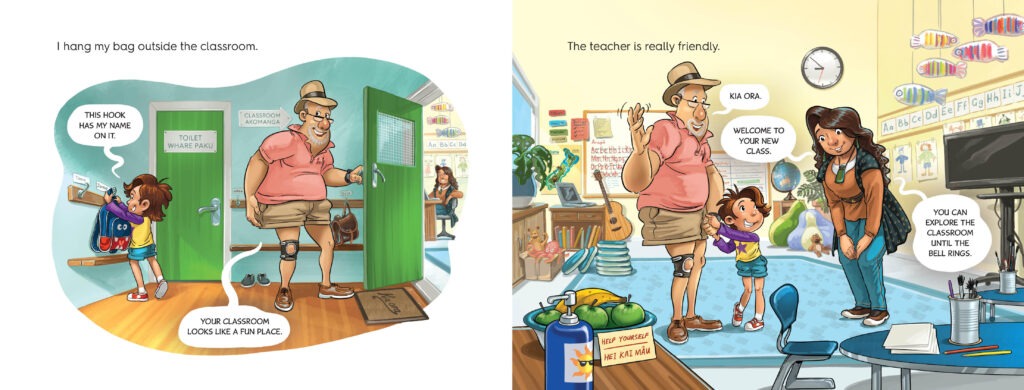
The book also acknowledges, through the interaction of the main character and their grandpa, that school might be different to what adults expect. I regularly hear people talk about their school experiences in the 1980s and 1990s and apply it to schools now, forgetting that their own school experiences were in many cases 30 or 40 (or more!) years ago. Here we have waiata to start the school day, te reo Māori throughout the dialogue and illustrations, jellybean-shaped teaching tables, whiteboards and markers for learning, a racially diverse group of children, and a few links to the soft skills of the New Zealand Curriculum such as being curious and taking responsibility.
It may sound a little didactic, but it’s written as if the child is starting school for the first time, and so these things are naturally woven into the book. There’s no storyline as such, beyond the structure of a school day, but that’s not the point here. The book is sufficiently visually appealing and written well so it doesn’t come across as boring or trite.
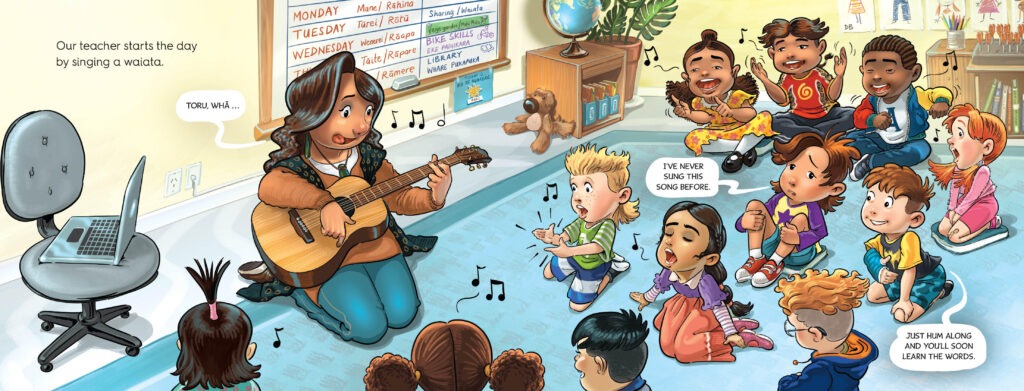
Donovan Bixley is a master of appealing, bright, Aotearoa-New Zealand illustration, and he has nailed it here. Every detail appears to be thought out and intentional, even down to what appears to be purposefully alphabetised names on the reading boxes in the background. I also really appreciate his choice to write and illustrate the main character as being gender neutral, so they can represent any child who happens to pick up this book. And it’s beautifully concluded with the grandpa asking, “Tell me what you learnt at school?” and the child replying, “I learnt school is fun!” If there’s any message to try and get across in a starting school book, that’s the one.
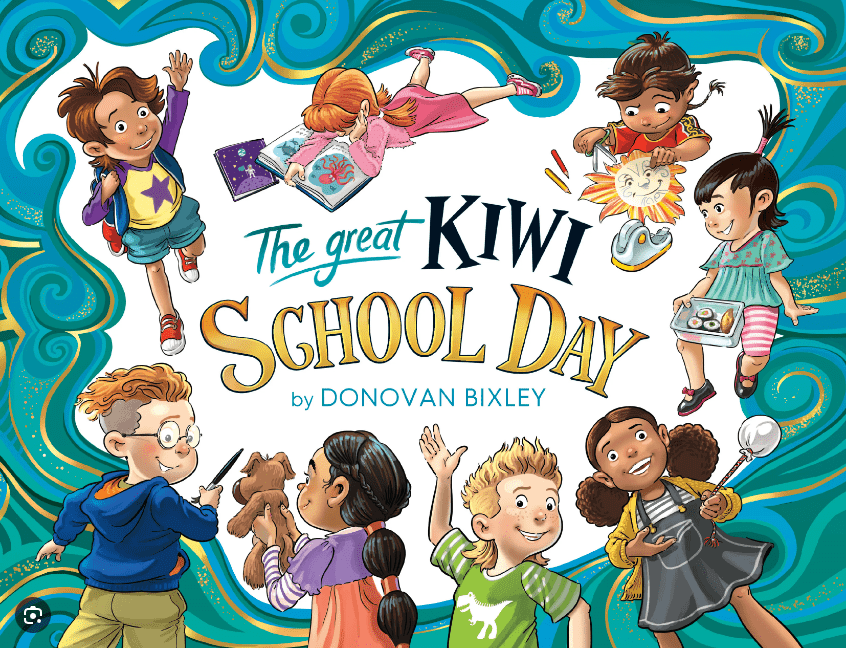
I Can Do It, by Suzy Cato, Kath Bee & Rose Northey
If you haven’t heard of Suzy Cato, then you have been living under a rock for, oh, 33 years or so. She is surely New Zealand’s most long-serving children’s entertainer. She and co-writer Kath Bee have been collaborating for some years now, and have released a number of songs together. They are all very earnest and full of positive and uplifting messaging—not everyone’s cup of tea, but delightful nonetheless.
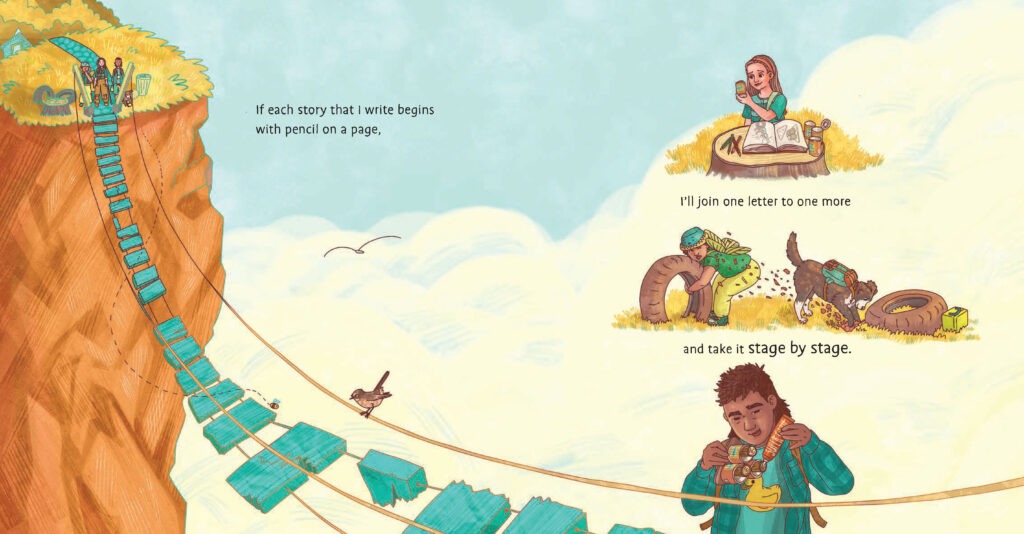
I Can Do It is both a book and a song. This is fairly common in children’s publishing, with examples like The Wonky Donkey and Haere Tonu springing to mind. Fortunately life has moved on since the CD-in-the-back-of-the-book that was so common until recently. Now you can stream or download the song that goes with the text, which is a relief for all of us parents who were sick of finding scratched CDs down the backs of our couches and empty CD pockets in the backs of our books. Thank goodness for the internet, huh?
The only problem with this book-and-song concept, and this is true of many of these books, is that they can be a little repetitive. This is allowable in song format, where the concept of a chorus or refrain is common, but can come across as a little tedious if you are reading the book rather than singing it. What can help, though, is if the illustrations make the book particularly appealing, and Rose Northey has absolutely hit a high note in this respect. She has managed to create a subtle storyline in the illustrations, with three kids going on a journey with a cow, sheep and dog in tow.
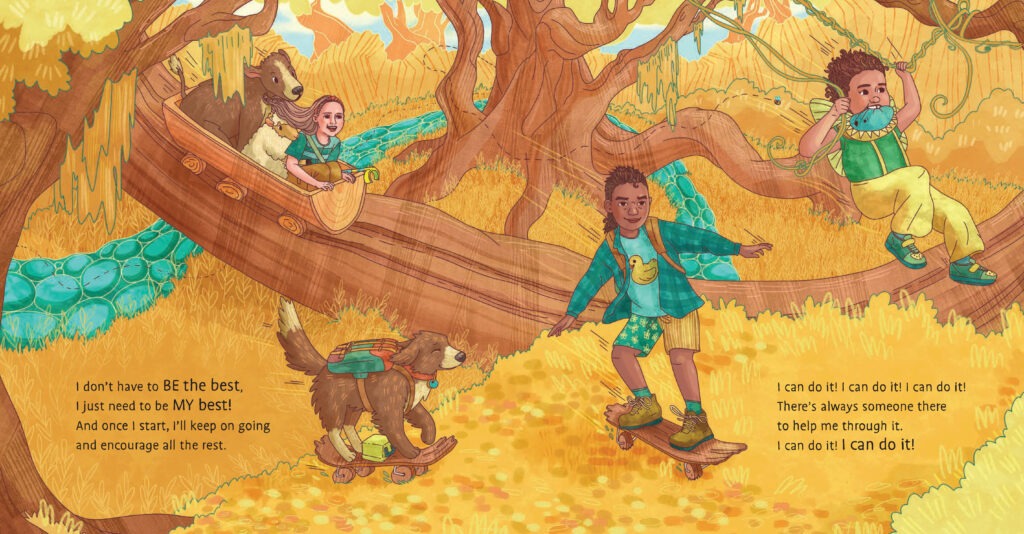
But what is really fantastic is the humour that is woven into the illustrations without detracting from them. Things like a pulley system being used to lift a cow up a cliff and a sheep who appears to be stealing stones from a path. Each kid has a different skin tone, body shape and hairstyle, and there’s even a kid who is illustrated using a crutch, but with no explanation or link to the story. Northey should be commended for these pieces of inclusive illustration. (The crutch is also used as an air guitar at one point, an excellent secondary use for a crutch in my humble opinion.)
Without Northey’s illustrations, I think this would have been a fine book/song with a nice positive message. With the illustrations, this book is really elevated, and I think it will have a wide appeal.
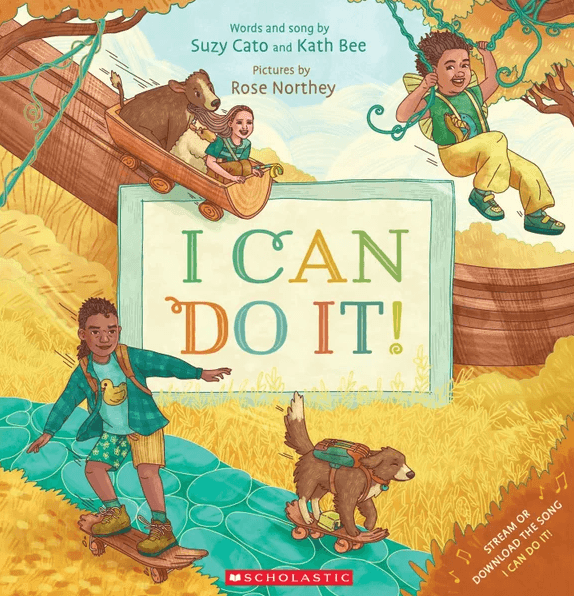
I Can Do It
By Suzy Cato and Kath Bee
Illustrated by Rose Northey
Published by Scholastic NZ
RRP: $22.00
Tama and the Taniwha, by Melanie Koster & Monica Koster
Every year there’s a reminder of how slow the process is from writing a picture book to publication of the physical book, and that reminder is in the form of the release of the winner of the Joy Cowley Award. Tama and the Taniwha was the 2022 winner, which means that it was submitted in 2021.
As befitting the winner of an award, it was worth the wait. Tama is being teased by his older sisters about how the taniwha in the lake will get him if he goes in the water. Once he gathers the confidence to dive under, he does indeed discover a taniwha…in the form of his synchronised swimming grandmother, who has taken the opportunity to frighten his sisters with the help of a wry grandfather who goes along with the joke. Tama swims and plays with his grandmother, and then takes the opportunity to tease his sisters back.
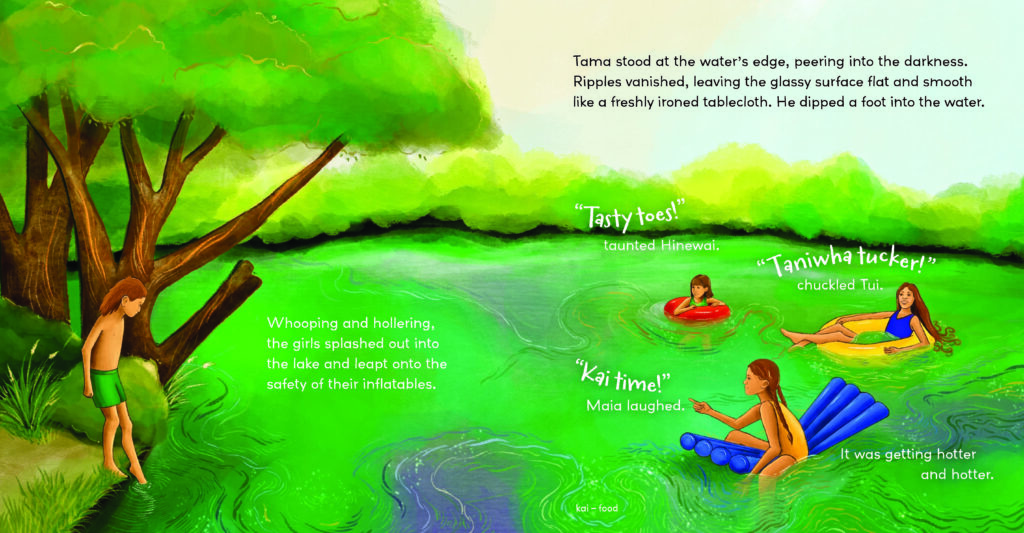
The writing is fluid, with some lovely imagery, and a couple of great call-backs that subtly suggest the taniwha is the grandmother without ever giving the game away to the reader. The illustrations back this up too, with a slight sense of magic in the sparkles under the water that mimic the colours of the grandmother’s hair and swimsuit. It has great read-again potential because once kids know what’s going to happen, they can look for the clues along the way.
I love the New Zealand-ness of the story and illustrations too. There are a few words of te reo (helpfully glossed in small writing at the bottom of the relevant page for anyone who isn’t familiar with the vocab), plus the overarching idea of a taniwha in the water. But there’s also the familiarity of swimming in a dark lake with eels and weeds, and the raupō and harakeke in the illustrations, which firmly place it in Aotearoa.
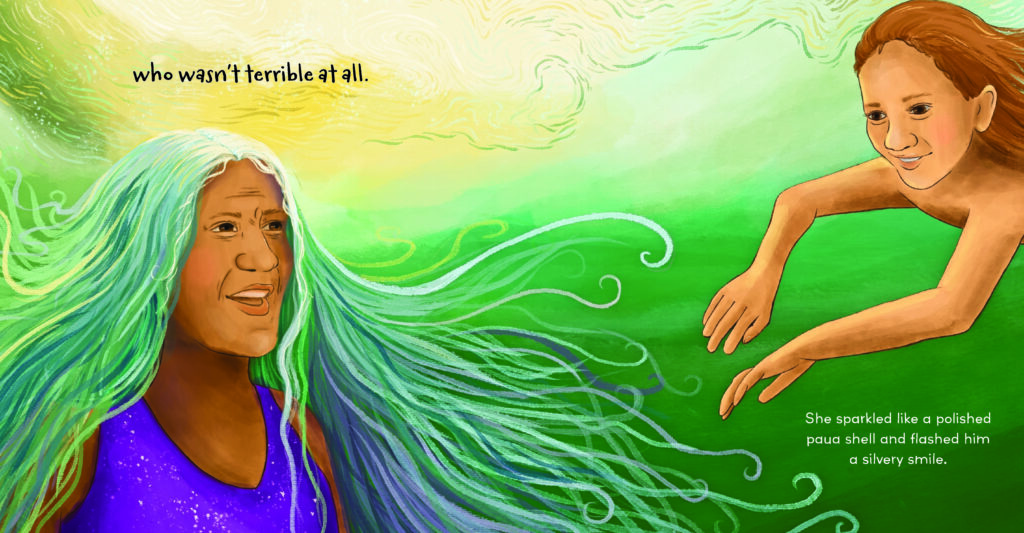
The Joy Cowley Award is run by the Storylines Trust, whose stated aim is to inspire young New Zealanders and their whānau to enjoy the magic of reading, especially reading books created for them by New Zealand writers and illustrators. This book is a great example of reaching that goal. Now to wait for the 2023 winner to be released next year!
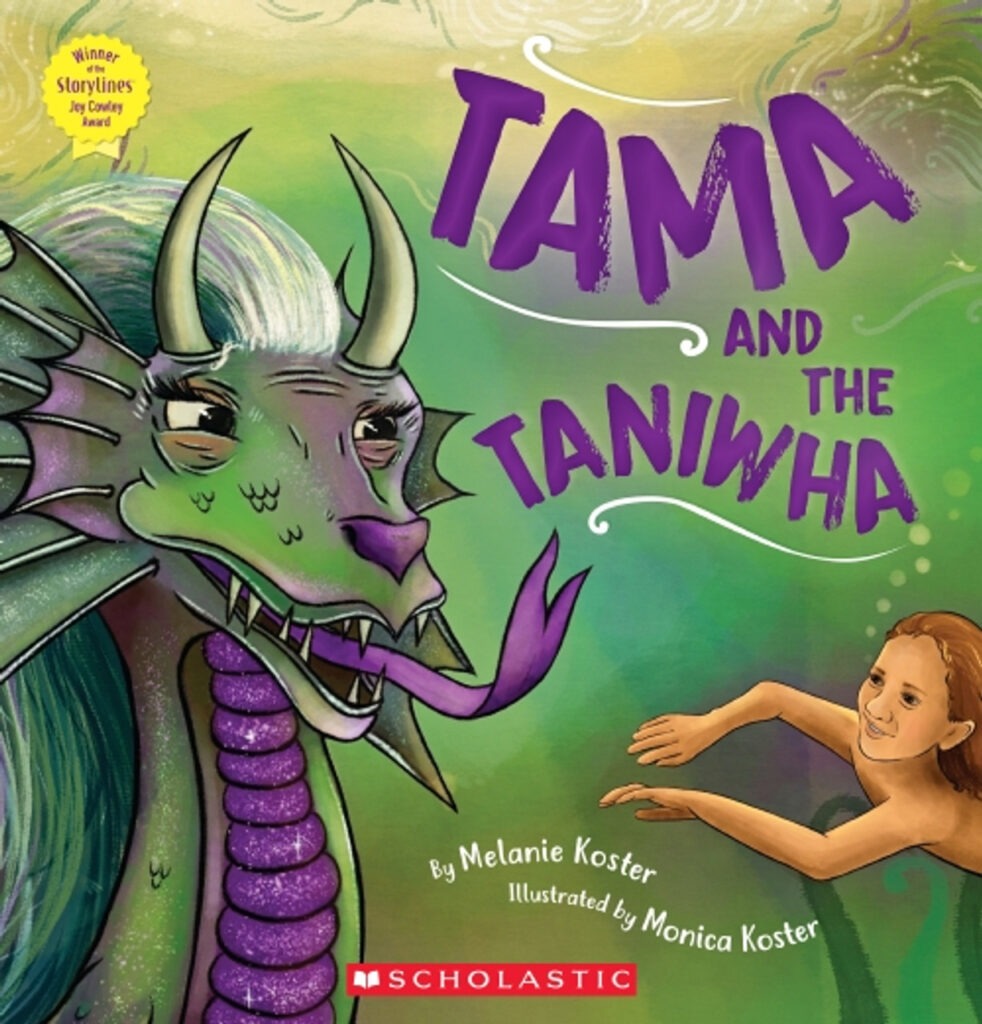
Tama and the Taniwha
By Melanie Koster
Illustrated by Monica Koster
Published by Scholastic NZ
RRP: $22.00
Grandpa’s Dashing Dessert, by Tania Sickling & Lael Chisholm
Speaking of the Joy Cowley Award, here we have the second book from 2020 Joy Cowley winner Tania Sickling. Her first book was Grandpa Versus Swing, which is well worth a read if you haven’t yet seen it. This book is a new story for the main character from her first book, Grandpa, following him as he chases down a runaway pavlova.
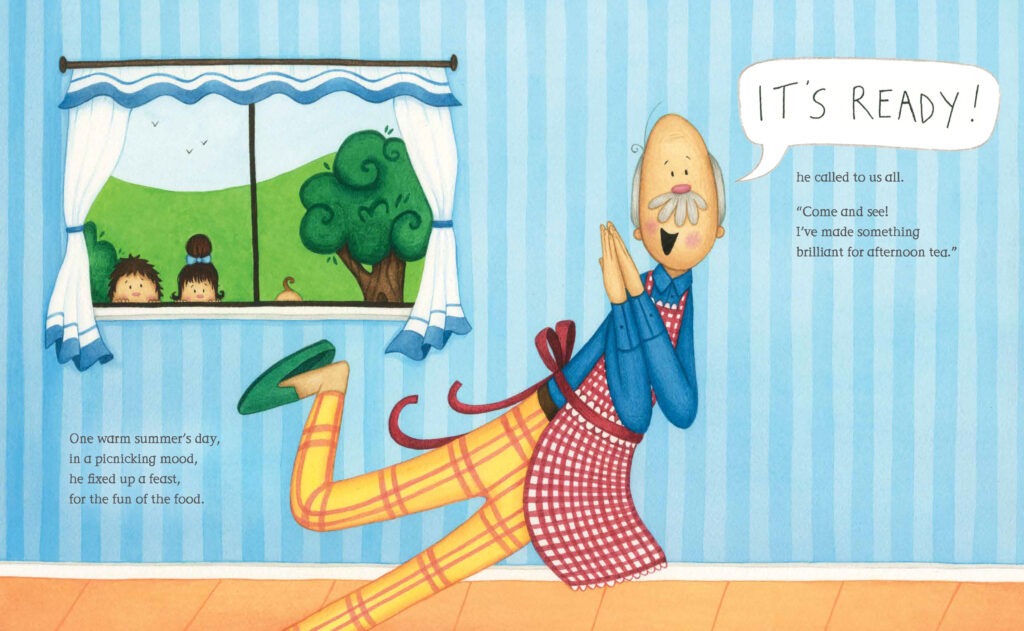
The structure of the story mimics the first book, with Grandpa going a bit overboard, getting himself into a situation that he can’t control, and then having Grandma come to the rescue. The over-the-top imagery (Grandpa chasing the precarious pavlova on a skateboard, and Grandma arriving on roller skates) are what underpins the humour, but the story also feels homely and family-oriented, with the grandkids enjoying a pavlova picnic at the end and chalking it all up as ‘a new tale to tell’.
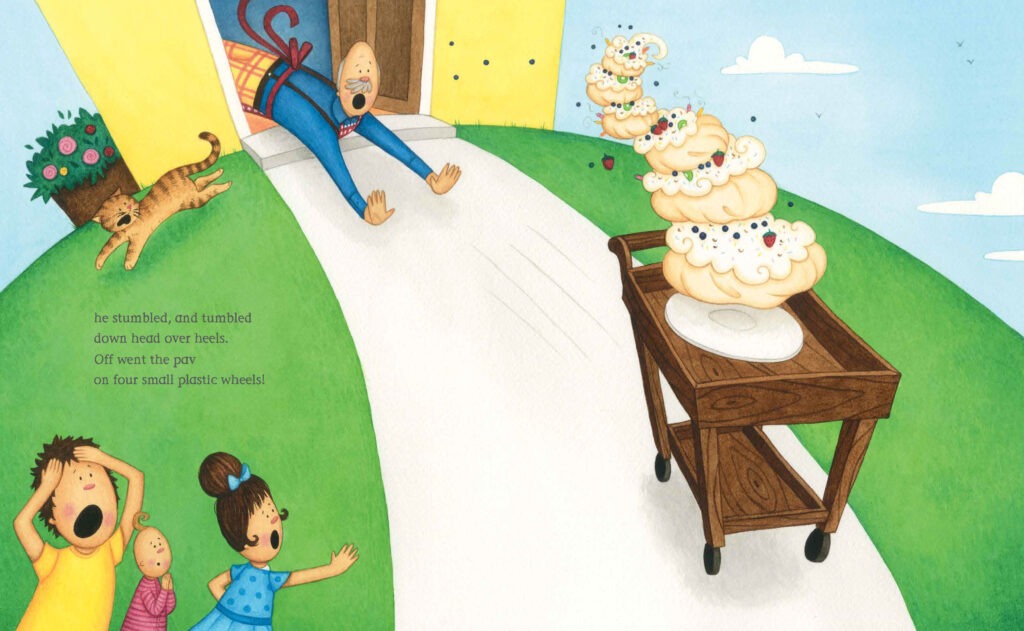
Lael Chisholm’s illustrations are a real joy, from the toppling pavlova, the wildly enthusiastic Grandpa, and the delightful wraparound cover image of the three grandkids being pulled along behind an elegant skateboarding grandfather, a cat, and a trolley, all suspended in midair. She does a fantastic job of giving the illustrations a true sense of movement and vigour. Her facial expressions too, are simply drawn, but perfectly conceived to lend exactly the right humour to the text.
There were a few places where I felt the rhythm didn’t scan quite right, or I found the word choice a little awkward but they were small bumps in the road for what is a really entertaining and enjoyable book. I predict another Grandpa story in the future.
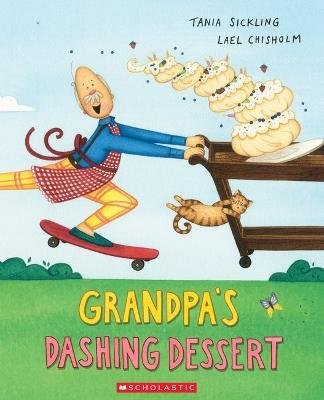
Grandpa’s Dashing Dessert
By Tania Sickling
Illustrated by Lael Chisholm
Published by Scholastic NZ
RRP: $22.00
Little Ruby & Friends, by Ruby Tui & Samoni Cavander
Ruby Tui may not be quite the definition of a household name, but after the Black Ferns won the World Cup last year, she has certainly got a wider public profile than most New Zealand female sports players. I imagine that her profile was a big drawcard for the publishers of this book, and they have made the most of it, with her name in bigger-than-usual text on the front cover, and a photo and message from her on the back. There will be many a parent picking up this book for their rugby-loving kid.
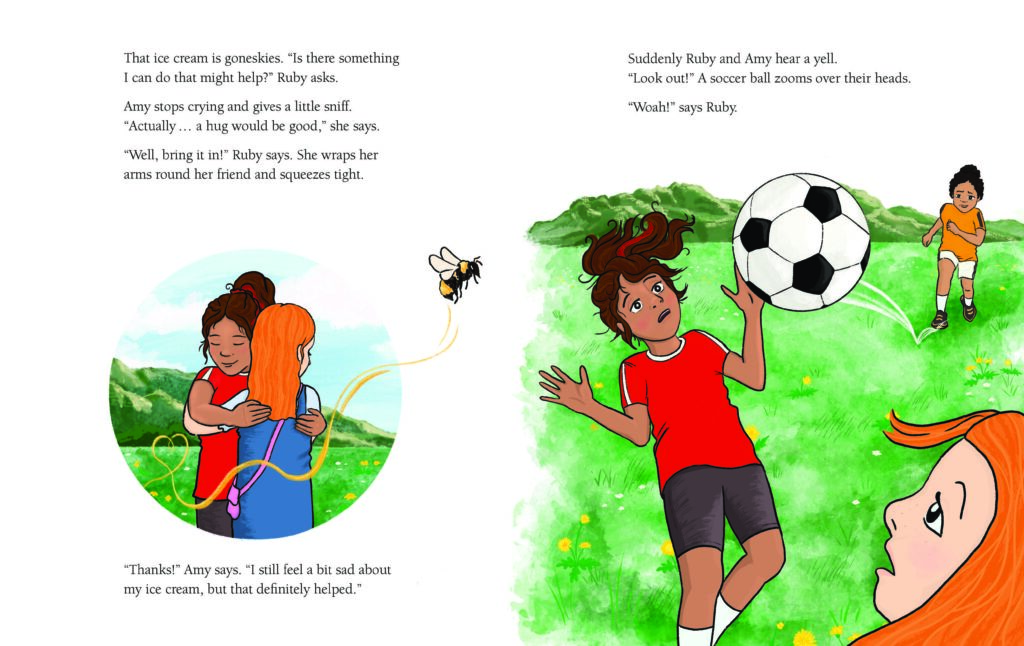
The story follows Little Ruby, who supports her friends when they’re finding things hard, and then is supported by her friends when she finds herself with a challenge to overcome. As befitting a sportsperson-turned-writer, the challenges experienced by the friends in the book are all physical (falling off a swing, climbing a jungle gym), but the guts of the story is about helping people manage their emotions when they encounter obstacles or difficulties.
As with many children’s books written by high-profile people from other domains, the writing itself isn’t outstanding. The dialogue in particular doesn’t ring true, and the vocabulary choices are a little unpolished. However, as real-life Ruby makes clear in the message on the back cover, the book is trying to teach kids that it’s OK to get upset, and give them some strategies to manage that for themselves and others. The point is not to write a perfect piece of literary prose.
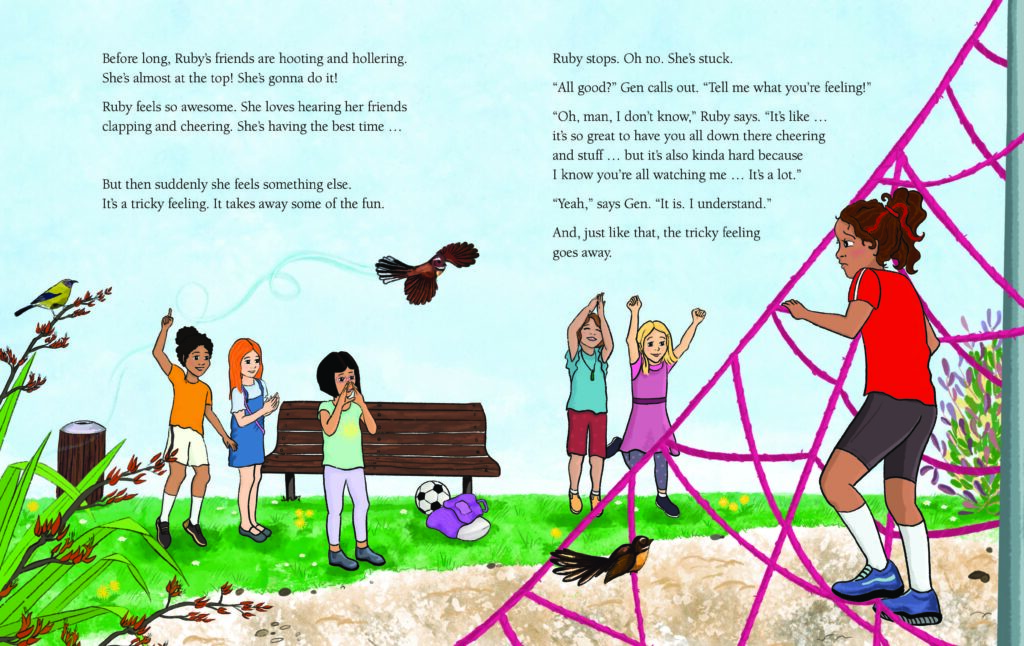
Ultimately, this book is a vehicle for Tui to get across a message that’s important to her. Given her public profile, I would like to think it will do reasonably well, and I imagine that she will be pretty stoked with that if she feels it’s made a difference to even one little Black Ferns fan out there.
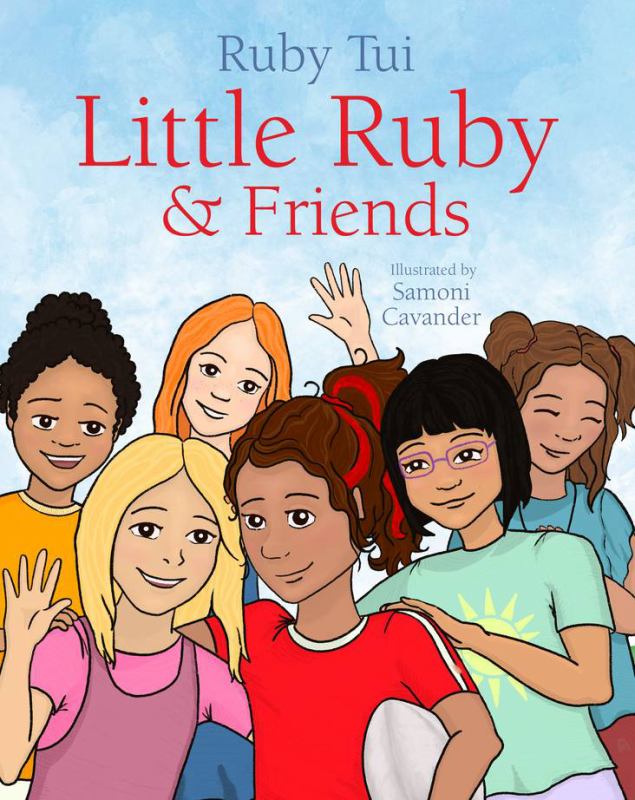
Little Ruby & Friends
By Ruby Tui
Illustrated by Samoni Cavander
Published by Allen & Unwin
RRP: $23.00
Annelies Judson
Annelies Judson writes book reviews and poetry for children, among other things. Her many loves include cooking, cricket, science and the em-dash. She can be found on Twitter/X and BlueSky @babybookdel and on Instagram @annelies_judson_writer. She also has a Substack newsletter starting February 2025, @anneliesjudsonwriter.




